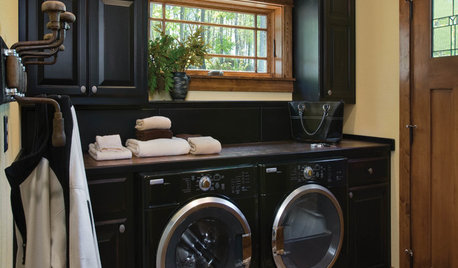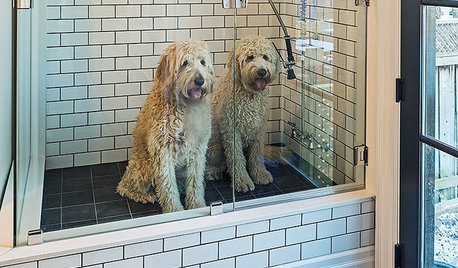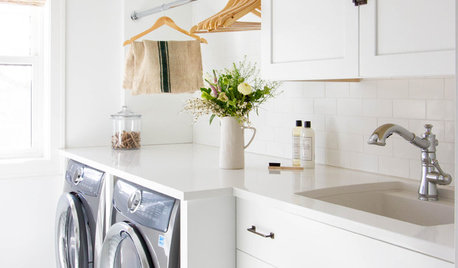In an "HE" clothes washer (e.g. a frontloader or a Calypso), it's important to use a low-sudsing detergent for optimum cleaning results. Excessive amounts of suds can hamper the wash action (by cushioning the clothes as they fall), and in extreme cases can even be harmful to the machine itself (by overflowing the drum and getting into mechanical and electronic parts).
Many laundry detergents today carry the actual "HE" label, or are otherwise indicated for use with frontload washers. Depending on one's local water hardness and degree of soiling in the washload, it's often possible to use carefully measured amounts of "regular" laundry detergents as well. The most important factor is generally that the formulation be reasonably low-sudsing.
To determine the sudsing level of a given detergent, here's a sample test procedure...
-=-=-=-=-=-=-=-=-=-=-
[Originally posted in the Appliances Forum by Rich (spambdamn_rich), on 28 January 2002 in the "(AKA) Best Laundry Detergent Part 4" thread - many thanks, Rich!]:
Here's a simple test one can do before putting a detergent of unknown sudsing potential into their front loader. It may help avoid a "suds lock" or other messy disaster. It will also give you an objective and scientific way of comparing various detergents for their suitability for front loader washing:
1) Get a nice glass or clear plastic jar with a tight fitting lid. A clean pickle jar does nicely for me.
2) Add a set amount of the detergent sample to the jar. I suggest maybe 1/4 teaspoon. Fill jar no more than 1/2 full with 1 or 2 cups of hot tap water - the hottest your tap will produce.
3) Put lid on jar and tighten. Shake jar for about 10 seconds vigorously. Set on counter and measure the suds level, in inches.
4) Do the same thing with HE detergents and "unknown" regular detergents. Use the sudsing level of the HE detergent as the benchmark. If you get too much sudsing with the HE detergent, you may have to reduce the amount added in step #2. In this case you may need to do a 2-step dilution: add a set amount (like 1/4 teaspoon) to a cup of water. Mix, and then add a set amount of that solution to the pickle jar with the hot water (maybe 1 oz. of the diluted detergent to the hot water in the shaking jar).
5) Keep a record of your results. It's very easy to forget which did what a week, month, or for me, even minutes later.
6) Be consistent!
7) This method should eliminate guesswork, and the variability of your water hardness and water heater temperature. If you also have data on the hardness of your tap water, that would be helpful to others you want to share your data with. Otherwise, listing your results with a known HE detergent, like Tide or Sears HE powder, will help calibrate your system and interpret your results.
8) Have fun!
P.S. I used a system like that about a year ago to check out Cheer powder. I rejected it as being way too sudsy for use in a front loader. I also rejected Ariel and Foca detergents for similar reasons.
-----
I re-ran some of my tests, albeit with different equipment. Here is a summary of results.
Technique: 1 cup of 140F tap water, about 5 grains hardness, in a 24 oz. clean Gray Poupon jar, with 1/4 tsp of various powdered detergents. Here they are with suds level and notes:
Detergent...........Suds Level
----------------------------------------
Sears HE............1 inch suds
Sears HE:STPP 2:1...1/2 inch
Tide HE.............3 inches, quickly subsiding to 1
All HE..............2 inches
Ariel...............4+ inches (to top of jar)
Foca................4+ inches (to top of jar and beyond)
Cheer...............4+ inches (top of jar with force)
Deluxe..............4+ inches
Supreme.............1 and 1/2 inches
(notes: The Deluxe detergent is a highly phosphated custom detergent sold by a local chemical warehouse. The Supreme detergent is a phosphated low sudsing detergent sold by a local Cash & Carry restaurant supply house. Its recommended amount is 1 oz. per 10 lb. load in front loaders)
Based on these results, I'm going to try using the Supreme phosphated product in the Neptune. Since its recommended amount for a 10 lb. load in a front loader is only 1 oz., 1/2 the amount recommended for Sears HE, it should have comparable sudsing characteristics plus the benefit of phosphates.
I would not recommend Cheer, Ariel, Foca, or the Deluxe products for use in front loaders. Although the All HE is relatively low sudsing, the recommended amount is 1/4 cup, and I noticed that even at that amount, the wash water was not slippery and the cleaning results were poor.
Your results may vary.
-=-=-=-=-=-=-=-=-=-=-
--Tom.
[first added to Appliances FAQ: 5 October 2002]
[moved to Laundry Room FAQ: 28 December 2004]
[last edited: 28 December 2004]













Related Discussions
liquid dishwashing detergent - where are the suds?
Q
HE detergent....Is it *just* an issue of suds?
Q
Incredible rinse water levels and Sport Suds detergent
Q
Testing soap instead of detergent
Q